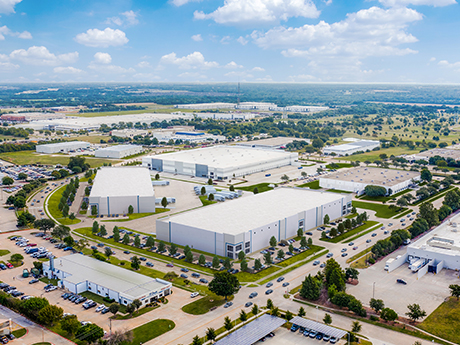By Ben Wallace, SIOR, vice president, Colliers
Over the past decade, “suburban industrial” buildings have become more critical than ever.
A suburban industrial building can be defined as one that is located within the suburbs of a major metroplex and designed for small- to medium-size users with above-average allotments of office/showroom space to accommodate service and light distribution uses. The typical building and infrastructure designs naturally limit heavy truck traffic and achieve higher rental rates, deterring heavy distribution and manufacturing users from locating there.

With macro-level shifts in how people shop for and acquire goods and services, the need for suburban industrial buildings that are located near consumers has become increasingly important.
Most cities have done an excellent job of regulating and altering development standards for these assets to meet this need while being careful to avoid creating rundown industrial areas in their communities. These cities have achieved this goal by elevating development standards to feature clean concrete exterior façades as well as the screening of dock loading areas and attractive glass entrances.
The reason that many of these items are important is that the vast majority of these suburban industrial developments are not appropriately zoned when developers come to build them. Developers are often required to go before planning and zoning boards to get rezoning approval; thus city residents’ voice and perception matter here.
In many ways, these buildings have similar characteristics to retail buildings. By enforcing such standards, developers of suburban industrial assets attract certain users that are typically contractor suppliers, tech-assembly companies, local businesses or showroom users. These occupiers support the suburbs with medium- to high-wage jobs that can bring more opportunities to those in the community as well as increase the tax base.
One of the prime examples of a suburban-industrial market is McKinney, located in the northeastern corner of the Dallas-Fort Worth (DFW) metroplex. McKinney has seen an incredible influx of demand for these assets due to its incredible job growth, population expansion and the increased need for e-commerce/last-mile delivery facilities near these growing clusters. As the influx of residents migrates further north, the McKinney suburban industrial market has become a strategic location for many Fortune 100 companies.
McKinney sits just north of the convergence of several high-traffic thoroughfares — U.S. Highways 121, 75 and 380 — connecting the “Far North” Texas markets of Anna, Melissa and Sherman with the rest of the DFW metroplex. This strategic location makes the city a prime destination for businesses looking to capitalize on this regional economic growth without sacrificing the suburban lifestyle that attracts residents and employees to the area in the first place.
Since 2018, the McKinney industrial market has added over 4 million square feet of suburban industrial buildings, growing the local inventory from 2.9 million square feet to over 7 million square feet, according to data from Colliers’ research department.
Even with this increase in locations for occupiers, Colliers’ research department analyzed the labor pool of McKinney and nearby communities. The team found that across the 10 main suburban industrial worker categories, nearly 5,500 workers are still needing to leave the McKinney area to find work elsewhere. This finding indicates that McKinney needs more suburban industrial buildings to accommodate its resident workers. In addition, according to EMSI data source, the McKinney population is expected grow by 12 percent in the next five years, which will add over 70,000 new residents to the community.
In the wake of recent economic turbulence related to high interest rates and general fears of recession, new construction starts and land acquisitions have slowed. However, industrial tenant demand has not. Today, Colliers’ industrial leasing team is tracking over 1.5 million square feet of active tenant requirements in the suburban markets of Allen, McKinney and Frisco.
Despite the strengths of the McKinney market, institutional investment groups continue to have concerns regarding new development in this corridor. This is primarily attributable to the macro-level perspective that U.S. Highway 75 does not serve the nation nearly as efficiently as some alternative highways throughout the DFW metroplex.
While this is true, our personal experience has told us that companies choosing McKinney are not typically attempting national distribution. Rather, these users are strategically opting to prioritize proximity to two major things: rooftops and the new North Texas chip plants: Texas Instruments and Globitech.
Looking forward, the City of McKinney has partnered with the Texas Department of Transportation to plan and construct the U.S. Highway 380 Bypass Loop that will be paramount for easing traffic concerns at the 380/75 intersection. This project could also help unlock additional land on the south side of McKinney National Airport for additional suburban industrial development, as well as fuel development in nearby Anna and Melissa.
Overall, the McKinney suburban industrial market is seeing a surge like never before, and it will need even more supply to meet current levels of tenant demand. With its strategic location, growing population and booming economy, there is no better place to be.


